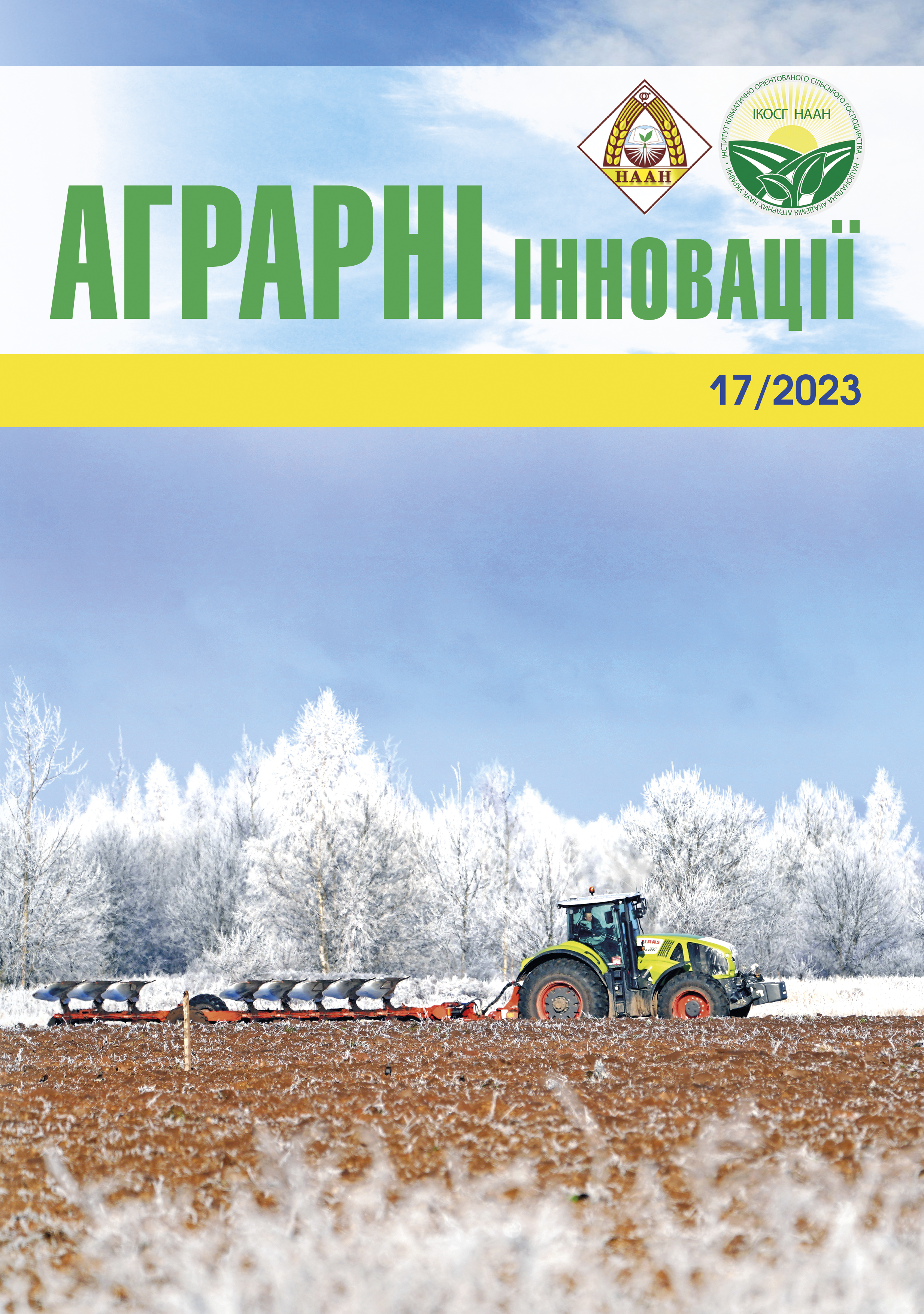COMBINATION OF FODDER AND SEED PRODUCTIVITY INDICATORS IS ONE OF THE METHODS OF CREATING VARIETIES OF PERENNIAL LEGUMINOUS GRASSES (ALFALFA AND MEADOW CLOVER)
Abstract
In the course of research, the nature of the inheritance of the main economic indicators in hybrid populations of alfalfa and meadow clover was established, and the newly created breeding material of alfalfa and meadow clover was evaluated for fodder and seed productivity. 10 hybrid populations were obtained, which were studied in a competitive test. As a result of the assessment, selection numbers of perennial leguminous grasses with high productivity in terms of fodder and seed indicators were selected. Purpose: to establish the nature of the inheritance of the main economic parameters in hybrid alfalfa populations, to comprehensively evaluate the new breeding material of alfalfa and meadow clover in terms of fodder and seed parameters. Methods: distant hybrids of alfalfa and meadow clover were created during the growing season, selection numbers were evaluated by a complex of valuable economic traits in competitive tests – traits that affect the value of fodder mass and seed productivity of plants, plant height, bushiness, seed mass, timing and intensity of flowering and fruiting. Results. Based on the sum of dry mass from two slopes, the number of alfalfa was allocated: 01(20). The excess was 11.25% relative to the weighted average standard according to the experiment. According to the sum of two slopes, the yield of dry mass of leaves per unit area was determined to be the best alfalfa numbers: 01(20), 03(20), 06(20). The excess, respectively, was from 6.68% to 22.11% of the weighted average standard. Alfalfa numbers 03 (20) and 05 (20) were the best in terms of seed productivity. The range of excesses was, respectively, from 24.30% to 43.27% relative to the weighted average standard according to the experiment. According to the indicator of the amount of dry mass, the meadow clover numbers 02(19), 3(14), 6(19), 8(17) were selected from the two slopes, which exceeded the weighted average standard by 4.08% to 10.40%, respectively. According to the sum of two slopes of the harvest of dry weight of leaves per unit area, clover numbers were the best: 06(19), 08(17). The excess was 12.06% and 14.37% of the weighted average standard, respectively. In terms of seed productivity, meadow clover numbers were the best among those identified: 05 (19) and 10 (16). The range of excesses was, respectively, from 18.62% to 24.81% relative to the weighted average standard according to the experiment. Among the obtained numbers, those that combine high indicators of fodder and seed productivity are determined to be the best. They will be used in the further breeding process to create highyielding varieties of alfalfa and meadow clover. Findings. In the course of research, the nature of the inheritance of the main economic indicators in hybrid alfalfa populations was established and the newly created breeding material of alfalfa and meadow clover was evaluated according to fodder and seed indicators. 10 hybrid populations were obtained, which were studied in a competitive test. As a result of the assessment, selection numbers of perennial leguminous grasses with high productivity in terms of fodder and seed indicators were selected.
References
2. Байструк-Глодан Л. З., Хом’як М. М., Жапалеу Г. З. Генетичні ресурси рослин. Львів, 2021. № 28. С. 78–81.
3. Бобер А. Ф., Корягін О. М., Повидало М. В. Форма боба, її генетика і зв’язок з умовами поширення і продуктивністю виду люцерна. Вісник аграрної науки, 2009. № 4. С. 40–43.
4. Корягін О. М., Повидало М. В.. Остапець Т. А, Буслаєва Н. Г. Селекція Medicago sativa L. на продуктивне самозапилення та її генетичні аспекти «Генетика і селекція в сучасному агрокомплексі» : матеріали Всеукраїнської науково-практичної конференції (26 червня 2019 р.) / редкол. : О. О. Непочатенко (відп. ред.) та ін. Умань, 2019. С. 91–93.
5. Лихвацький В Л. Селекція конюшини та люцерни на Носівській селекційно-дослідній станції. 90 років Носівській селекційно-дослідній станції. Чернігів, 2001. С. 43–52.
6. Харченко Ю. В., Кочерга В. Я., Холод С. М. Продуктивність зразків конюшини лучної в умовах Устимівської дослідної станції рослинництва. Корми і кормовиробництво. 2013. Вип. 76. С. 54–58.






